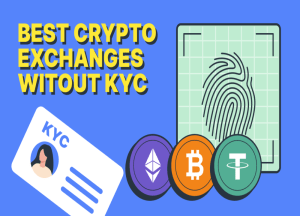Money Can’t Buy Votes? Elon Musk’s “American Party” and His High-Stakes Political Gamble
Recently, Elon Musk made headlines by announcing the formation of the “American Party,” boldly claiming it will embrace Bitcoin and challenge the United States’ entrenched two-party system.
In Musk’s eyes, fiat currency is “hopeless,” and technology plus crypto assets might become a new lever to shake up politics. However, looking back at the history of third parties in the U.S. and the reality of its electoral system, this seemingly well-funded and high-profile experiment may be destined to be a high-risk political bet.

1. Why Musk Founded the “American Party”: The Clash of Interests Behind the “Big and Beautiful” Bill
Musk’s sudden declaration of a new political party may look impulsive, but it is deeply rooted in very practical business interests: his relationship with Trump has fractured.
Earlier this year, the Trump administration’s “Big and Beautiful” bill eliminated tax credits that had encouraged electric vehicle purchases—a policy change that costs Tesla about $1.2 billion in annual losses. In addition, Trump plans to cut NASA’s science budget from $7.3 billion to $3.9 billion, which directly impacts SpaceX’s core operations.
More intriguingly, The New York Times revealed that Musk had once promised to support Trump’s campaign with hundreds of millions in funding—support that has yet to fully materialize, eroding the trust between them.
On the surface, Musk is striking back with claims that “America is going bankrupt due to corruption and waste.” In reality, founding a new party is more a direct counterattack and a decision driven by real business interests than a purely ideological mission.
2. Why Are Third Parties in the U.S. Doomed to Be Marginal?
History repeatedly shows that third parties have never truly succeeded in the U.S.
In 1912, former President Roosevelt founded the Progressive Party and won 27% of the popular vote—but still lost to Democrat Woodrow Wilson. In 1992, Ross Perot captured 19% of the vote but failed to secure a single electoral vote. Similar examples are scattered throughout American history.
Why is it so difficult? The core reason lies in America’s winner-takes-all electoral system. Unless a party wins the most votes in a single district, it gets nothing—making it nearly impossible for smaller parties to build momentum over time.
Additionally, ballot access requirements in many states are daunting. For example, California requires a new party to recruit around 75,000 registered voters or collect at least 1.1 million valid signatures. Veteran election lawyer Richard Winger notes, “Even with unlimited money, building a nationwide party takes years and possibly billions of dollars.”
This is the hard truth Musk faces: no matter how deep his pockets are, systemic barriers are not easily overcome.
3. The Party’s Platform: Pro-Crypto Rhetoric Meets Tough Reality
Musk has yet to release a detailed party platform, but he confirmed key policy goals while responding to online questions. Asked whether the American Party would push for debt reduction, responsible spending only, modernizing the military with AI and robotics, accelerating AI development to maintain U.S. dominance, cutting regulation (especially in energy), protecting free speech, incentivizing births, and taking centrist stances on other issues, Musk simply answered: “Yes.”

On crypto assets, Musk made it clear that the American Party will strongly embrace Bitcoin, even saying that fiat money is “hopeless.” While novel, this stance faces substantial real-world hurdles.
Bitcoin has indeed attracted major institutional capital in recent years. For instance, BlackRock’s spot Bitcoin ETF has grown to $75 billion in assets under management, generating annual revenue exceeding $187 million—surpassing even its S&P 500 ETF.
However, for ordinary American voters, the awareness gap is huge. Most still see Bitcoin as a highly speculative asset rather than a political cause.
Even if Musk can attract the attention of young voters and the tech elite for a while, pushing concrete crypto policies in the face of traditional financial institutions and strict regulation will be extremely challenging. Bitcoin may win headlines, but turning that buzz into real political clout is another story.
4. How Far Can the “American Party” Go? It All Hinges on Musk’s Personal Appeal
Historically, third-party survival often depends on the leader’s personal charisma. In 1968, the American Independent Party under George Wallace won electoral votes in five southern states, but the party faded as Wallace’s influence waned.
Musk currently enjoys a powerful personal brand, but that brand is deeply intertwined with Tesla and SpaceX. Should his companies face an operational crisis or reputational hit, the party could collapse just as quickly.
In April, Musk invested $20 million in a Wisconsin Supreme Court election to sway the result—but ultimately failed, proving that money and star power alone don’t guarantee political victories.
Georgetown political science professor Hans Noel noted, “A new party needs extremely loyal, active supporters. Money alone is not enough.” While Musk’s tech-savvy, younger audience may be enthusiastic, whether they become consistent political backers is highly uncertain.

5. A Political Experiment Trapped by Institutional Barriers
Overall, Musk’s new party faces far more obstacles than most imagine.
On one hand, the electoral system is inherently hostile to third parties—winner-takes-all rules severely limit their survival space. On the other hand, state-level ballot requirements demand enormous resources and time.
Moreover, mainstream media and the presidential debate commission are tightly controlled by the two major parties, making it nearly impossible for smaller parties to gain sufficient exposure. Historically, successful third parties have usually just disrupted the system temporarily, with their ideas eventually absorbed by the two dominant parties.
Despite its fresh message, Musk’s American Party is unlikely to escape this familiar fate.
Conclusion: An Expensive Political Experiment at Best
Looking back, Musk’s launch of the American Party may seem radical but is likely just an expensive political experiment.
His conflict with Trump drove its creation, while the Bitcoin-friendly policy provides an eye-catching hook. Yet institutional barriers, voter reality, and personal brand risk all mean this new party is unlikely to achieve lasting success.
In a political landscape dominated by the two-party system, Musk’s American Party will likely remain a sideshow.
This pro-Bitcoin third-party experiment may ultimately prove just one thing: in America, money isn’t everything—tradition and institutions are far harder to beat. Whether Musk’s ambition endures may be more worth watching than the party’s actual future.
Risk Disclaimer: This article is for information only and does not constitute any investment advice. Markets carry risks. Please manage your positions carefully.
How to Trade Crypto on BTCC?
This brief instruction will assist you in registering for and trading on the BTCC exchange.
Step 1: Register an account
The first step is to hit the “Sign Up” button on the BTCC website or app. Your email address and a strong password are all you need. After completing that, look for a verification email in your inbox. To activate your account, click the link in the email.

Step 2: Finish the KYC
The Know Your Customer (KYC) procedure is the next step after your account is operational. The main goal of this stage is to maintain compliance and security. You must upload identification, such as a passport or driver’s license. You’ll receive a confirmation email as soon as your documents are validated, so don’t worry—it’s a quick process.

Step 3. Deposit Funds
After that, adding money to your account is simple. BTCC provides a range of payment options, such as credit cards and bank transfers. To get your money into your trading account, simply choose what works best for you, enter the amount, and then follow the instructions.
- Fiat Deposit. Buy USDT using Visa/Mastercard (KYC required).
- Crypto Deposit. Transfer crypto from another platform or wallet.

Step 4. Start Trading
If you wish to follow profitable traders, you might go for copy trading, futures, or spot trading. After choosing your order type and the cryptocurrency you wish to trade, press the buy or sell button. Managing your portfolio and keeping track of your trades is made simple by the user-friendly interface.

Look more for details: How to Trade Crypto Futures Contracts on BTCC
BTCC FAQs
Is BTCC safe?
Based on its track record since 2011, BTCC has established itself as a secure cryptocurrency exchange. There have been no reports of fraudulent activity involving user accounts or the platform’s infrastructure. By enforcing mandatory know-your-customer (KYC) and anti-money laundering (AML) procedures, the cryptocurrency trading platform gives consumers greater security. For operations like withdrawals, it also provides extra security features like two-factor authentication (2FA).
Is KYC Necessary for BTCC?
Indeed. Before using BTCC goods, users must finish the Know Your Customer (KYC) process. A facial recognition scan and legitimate identification documents must be submitted for this process. Usually, it is finished in a few minutes. This procedure has the benefit of strengthening the security of the exchange and satisfying legal requirements.
Because their accounts will have a lower daily withdrawal limit, those who do not finish their KYC are unable to make deposits. It should be noted that those who present a legitimate ID without a facial recognition scan will likewise have restricted withdrawal options.
Is There a Mobile App for BTCC?
Indeed. For users of iOS and Android, BTCC has a mobile app. The exchange’s website offers the mobile app for download. Since both the web version and the mobile app have the same features and capabilities, they are comparable.
Will I Have to Pay BTCC Trading Fees?
Indeed. BTCC levies a fee for trade, just like a lot of other centralised exchanges. Each user’s VIP level, which is unlocked according to their available money, determines the different costs. The BTCC website provides information on the charge rates.
Can I Access BTCC From the U.S?
You can, indeed. According to its website, BTCC has obtained a crypto license from the US Financial Crimes Enforcement Network (FinCEN), which enables the cryptocurrency exchange to provide its services to investors who are headquartered in the US.
According to BTCC’s User Agreement document, its goods are not allowed to be used in nations and organisations that have been sanctioned by the United States or other nations where it has a licence.
BTCC Guide:
- How to Trade Crypto Futures Contracts on BTCC
- BTCC Guide-How to Deposit Crypto on BTCC?
- What is Crypto Futures Trading – Beginner’s Guide
- What is Leverage in Cryptocurrency? How Can I Trade at 100X Leverage?
- BTCC Review 2024: Best Crypto Futures Exchange
Crypto Buying Guides:
- How To Buy Bitcoin (BTC)
- How To Buy Picoin
- How To Buy Ethereum (ETH)
- How To Buy Dogecoin (DOGE)
- How To Buy Pepe Coin (PEPE)
- How To Buy Ripple (XRP)
Crypto Prediction:
- Ethereum (ETH) Price Prediction 2024, 2025, 2030 — Will ETH Reach $10,000?
- Ethereum Price Prediction 2024, 2025, 2030: How High Can ETH Go in 2024?
- Bitcoin (BTC) Price Prediction 2024, 2025, 2030 — Is BTC a Good Investment?
- Ripple (XRP) Price Prediction 2024, 2025, 2030 — Will XRP Reach $1 After SEC Lawsuit?
- Pi Coin Price Prediction 2024,2025,2030 — Is Pi Coin a Good Buy?
- Pepe (PEPE) Price Prediction 2024, 2025, 2030 – Will PEPE Reach $1










